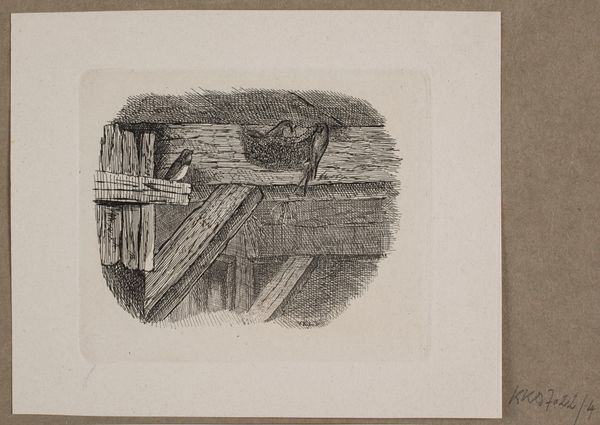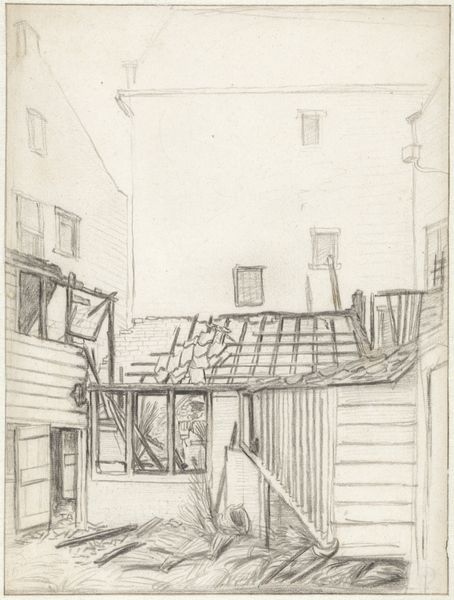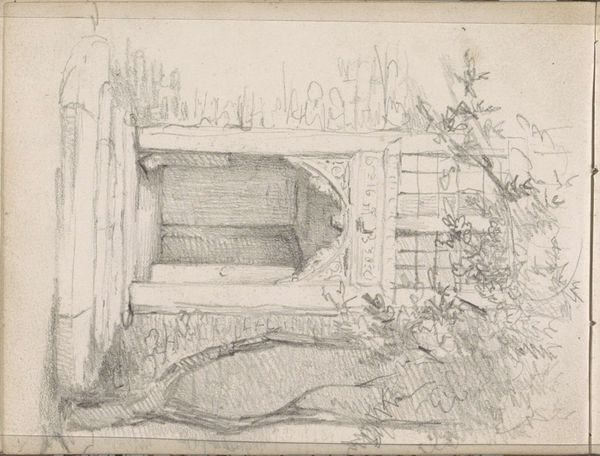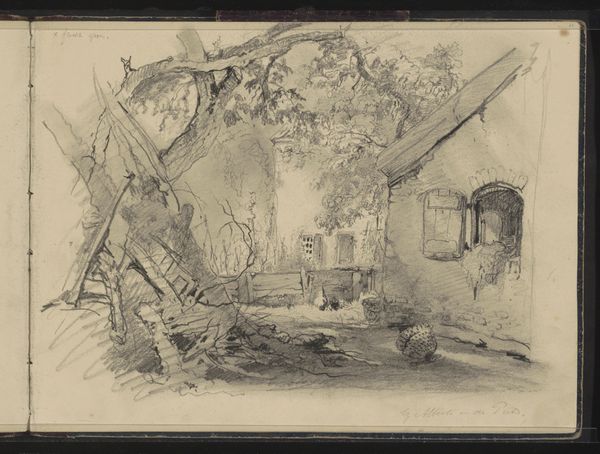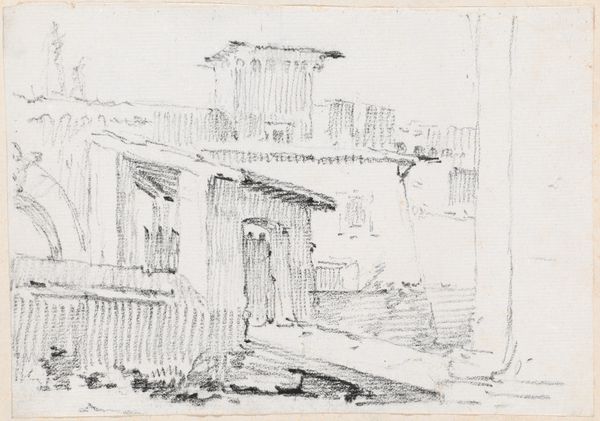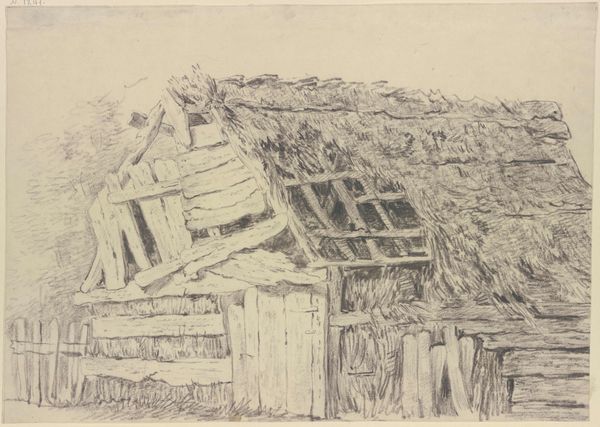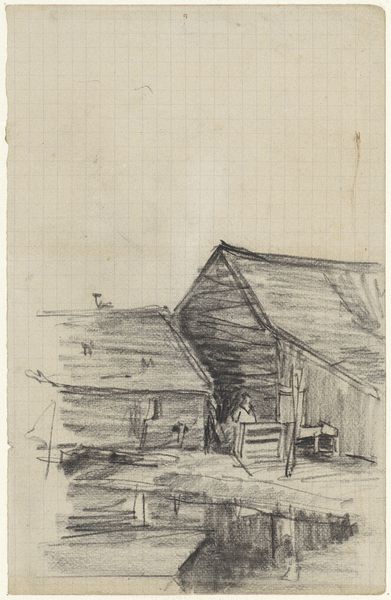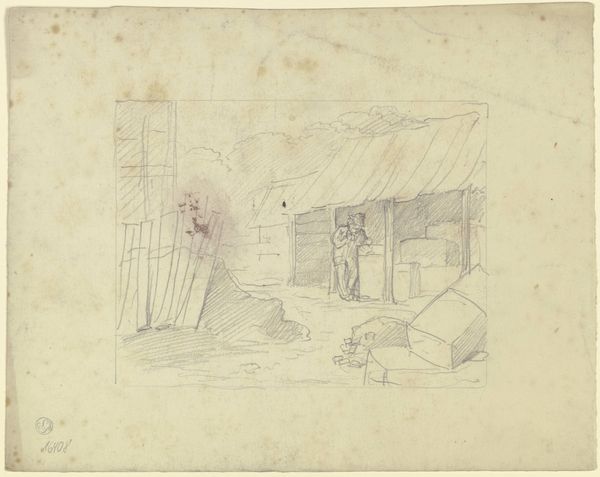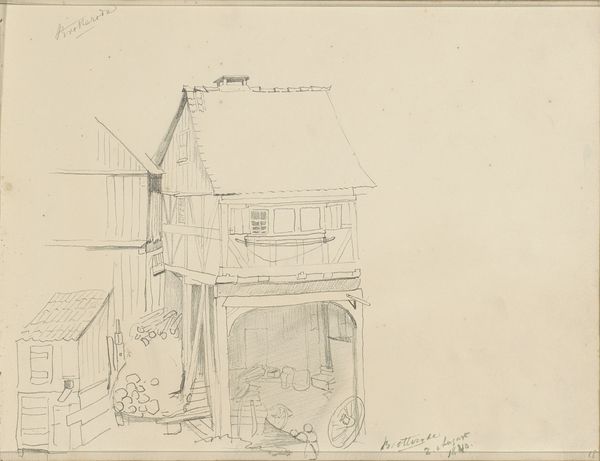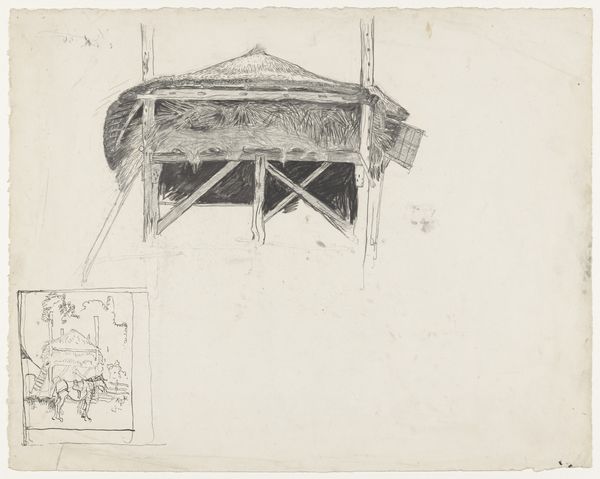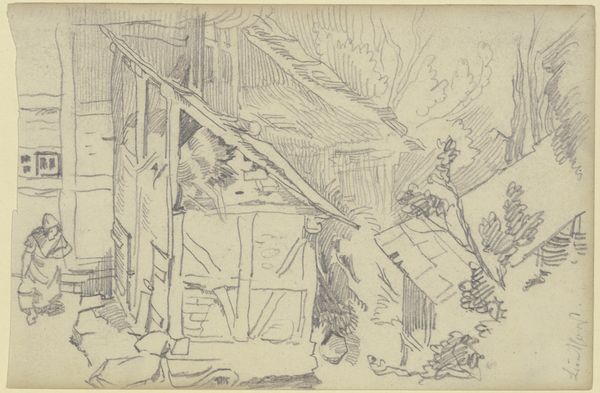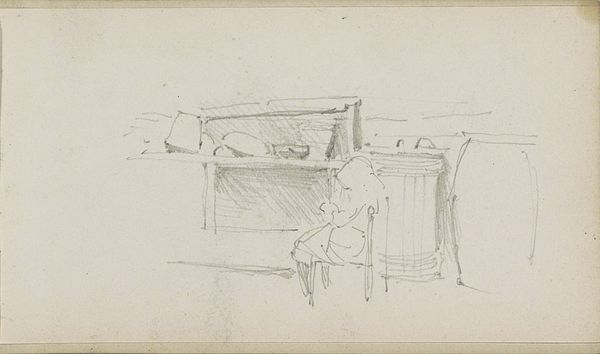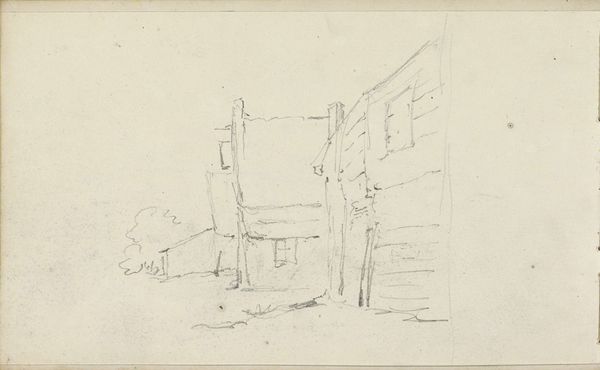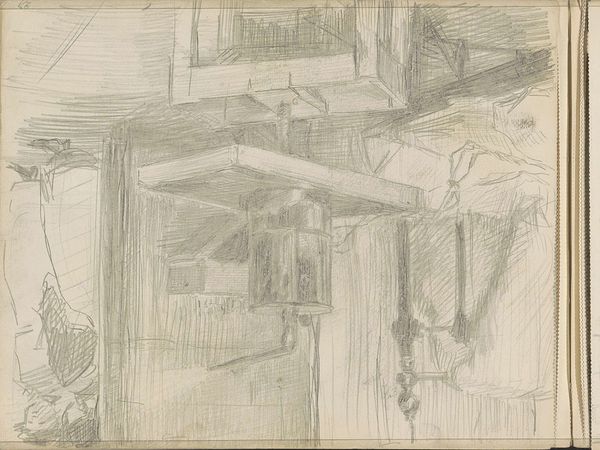
drawing, ink, pencil
#
drawing
#
landscape
#
ink
#
folk-art
#
pencil
#
genre-painting
#
realism
Dimensions: 213 mm (height) x 228 mm (width) (bladmaal)
Editor: This is Johan Thomas Lundbye’s "Høns på et loft," made with ink and pencil in 1847. It's a detailed drawing of chickens inside what appears to be the loft of a barn, and the composition gives it an almost claustrophobic feel. What story do you see being told here? Curator: The image presents, on the surface, a scene of rural life. Yet, considering the period and Lundbye's known nationalism, the humble chickens become something more. Lundbye was deeply invested in portraying the Danish landscape and its people. This could be read as a reflection on the lives of ordinary Danes, and how even in confined spaces – the loft, perhaps symbolic of social constraints – life persists. The stark realism emphasizes the materiality of everyday existence. Editor: Social constraints… I hadn’t thought of it that way. The chickens are just going about their business, unaware. Curator: Exactly. And this 'unawareness' is precisely what can make it so poignant. Is Lundbye perhaps commenting on a passive acceptance of societal limitations? Moreover, consider the rooster, typically a symbol of vigilance and pride. What does it signify placed amongst the hens in this enclosed space? Editor: Perhaps the limitations are also about gender roles? Are the hens representative of women during that time? Curator: That's a very interesting perspective. Considering the rooster's diminished stance, we could consider if the artwork seeks to make a quiet point about the social hierarchy in this domestic setting, hinting to the status of the women of the time. Editor: This definitely gave me a new way to approach how I perceive and understand art. Seeing it as a time capsule helps contextualize everything. Curator: Indeed, every brushstroke echoes the debates and concerns of its time. Thinking about art as embedded in a historical and political landscape opens new dialogues, offering opportunities for discovery and reflection on art's broader cultural implications.
Comments
No comments
Be the first to comment and join the conversation on the ultimate creative platform.
